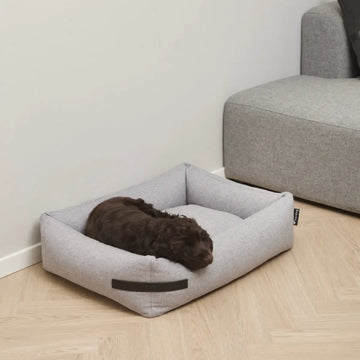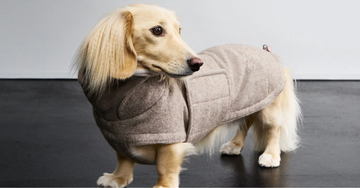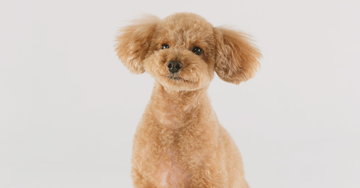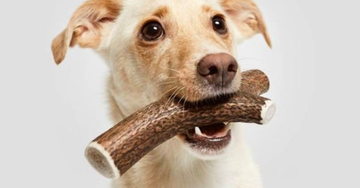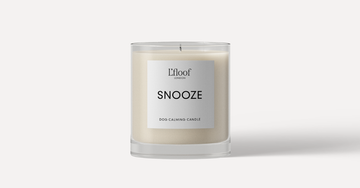Advice for teaching your dog to be home alone - from personal and professional experiences
Home-alone training
When you bring a puppy home, it will want to be with you all the time. Dogs are pack animals, and your presence provides security. Togetherness builds trust, and the time you invest in your puppy is also a gift when it comes to housetraining. But just as important as the close bond is the ability to be alone – a skill that your dog must master to have a balanced and safe life.
Many dog owners put off house-alone training because they don't want to upset their puppy. But the earlier you start, the easier it will be. In fact, you can start as early as a few days after your puppy moves in.
Small steps create big results
House-alone training isn't about leaving your puppy alone for hours from day one. It's about gradually getting him used to you leaving – and always coming back.
Here is a step-by-step guide to safe training:
Start small – Start by closing the door when you go to the bathroom. Although it seems simple, it is an important exercise for your puppy.
Take a long bath – Once your puppy has gotten used to closed doors, you can take a bath without letting him come along.
Take out the trash – A short walk without your puppy shows it that it's okay for you to disappear for a moment.
Take a short walk alone – Start with just 2-5 minutes and gradually increase the time as your puppy becomes more confident.
Your puppy needs to learn that your disappearance is nothing to be afraid of. By building up the training slowly and steadily, you will avoid stress and insecurity.
Should your puppy have a designated area?
When you start housetraining your puppy, it can be helpful to choose a specific area for him to stay in. But how do you know if your puppy needs a smaller, more confined area – or if he’ll be best off with access to the entire home?
Limited area or the entire home?
Dogs are different, and so are their needs. For some puppies, a smaller area provides more security, as there are fewer places to keep an eye on. A large home can feel overwhelming, and some puppies stress out about having to "look after" the entire home. A dog crate, playpen, or a single room can therefore create a calmer atmosphere.
For other dogs, however, a confined area can make them feel more insecure. If your puppy is whining because he thinks you're still in the house, it may help to give him access to more rooms. This will help him understand that you've actually left, and may reduce his need to seek your attention.
Set your puppy up for success
Whether you choose a small area or the entire home, it is important to "puppy-proof" the environment. Remove things that could break or hurt your puppy. Remember, a small puppy explores the world with its teeth!
If your puppy tends to chew on door frames or furniture, a simple housewife trick can help: Drizzle a little peppermint oil on the areas you want to protect . The strong scent and taste will keep most puppies away – without being harmful to them.
Walk away from a tired but alert puppy
A puppy that is full of energy will have a hard time finding peace while you are away – but an overstimulated puppy may also have a hard time relaxing. That is why it is important to find the right balance: A tired but alert dog.
Exercise creates calm – but wait a bit before you go
A good way to prepare your puppy for home alone time is to make sure he is physically or mentally stimulated. Take a long walk or give your dog a quiet activity that will get his brain working. But avoid wild games that will get your dog into overdrive. The idea is not to make your puppy euphoric – but relaxed.
An important detail is to wait a little before you walk out the door . If you leave right after a walk, your puppy may associate your departure with the end of something fun, which can make him more restless. Instead, set aside time for you to land again. Lie down on the couch, read a book or drink a cup of tea – that way your puppy will mirror your calmness and calm down himself.
Use natural sedatives
If your puppy is having trouble calming down, you can help him along the way with natural calming agents. An hour before you leave home, you can give your dog something that promotes relaxation, such as:
Relaxing activity: Give your puppy a calm start when they are alone
When you leave home, it can be a big help for your puppy to have something to do. The first 5-10 minutes alone are often the hardest – this is when your puppy may start whining or looking for you. Giving them something relaxing to do will help them find peace instead of getting frustrated.
Puppies should not be left alone with chew bones. There is a risk that large pieces can break off and get stuck in the throat. Instead, choose a lick mat with wet food or an activity toy that hides treats.
Come back relaxed.
It is important that you return completely calm and relaxed, no bragging or loud baby voices. You are welcome to tell your puppy that it was great, but then you should also continue as if you had never left.
If your puppy is still overexcited, jumping up and whining when you return, it helps for some people to completely ignore the dog for the first 5 minutes after you get home.
This way you let them know that it is completely natural and nothing special that you come and go.

